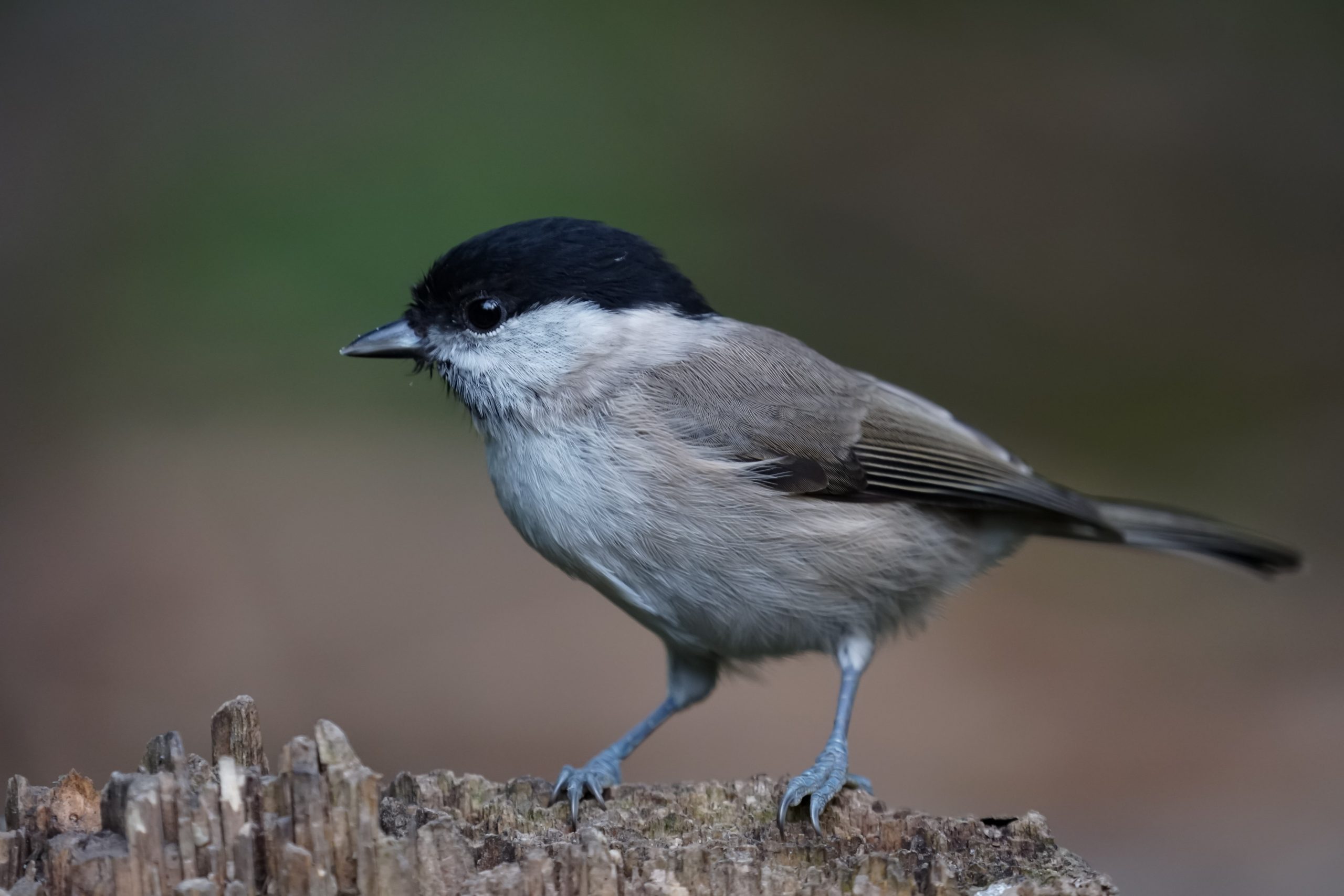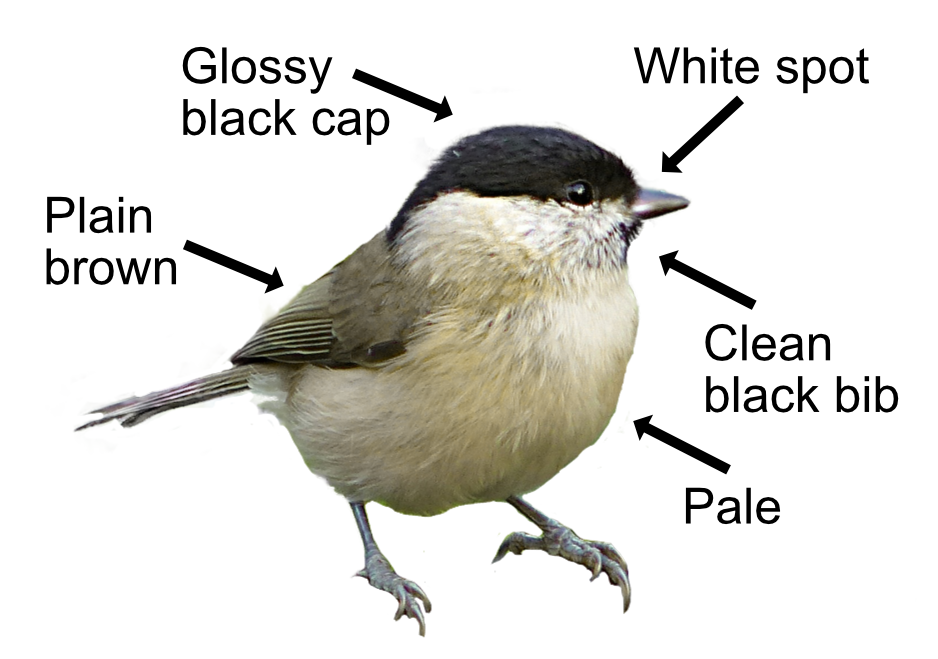
The Marsh Tit is completely misnamed as it loves open deciduous woods or parkland and doesn't like marshes at all. It is very shy, often skulking in the undergrowth. When you do get a glimpse, it is usually not long enough to tell if it is a Marsh Tit or a Willow Tit as the two are almost identical. They are the identical twins of the bird world. Scientists didn't realise they were two different birds until 1897. Coal Tits can look pretty similar too.
Marsh Tits have an all glossy black cap, white cheeks, a small black bib, a plain brown back and wings, and paler underparts. They have a short black bill with a pale mark at the base which is incredibly hard to see. A Coal Tit by comparison has a black cap but with a white stripe at the back and a big black bib. As for the Willow Tit, there are tiny differences. The Willow Tit has a duller black cap and no bill spot, differences that are next to impossible to spot even on a good day with an expensive pair of binoculars. The best way to tell them apart is by their calls. The Marsh Tit's is an explosive "pit-chu" like a big sneeze or "chicka-dee-dee-dee".

Marsh Tits eat insects, spiders, fruits and seeds, often extracting seeds from small berries like honeysuckle. Their strong bills can get into quite hard seeds. Beechmast is their preferred food when it can be found. They feed amongst leaves or by taking food from the ground and will store food in the morning to retrieve later for a snack in the afternoon. They have a superb memory for remembering where they have hidden things. If you are incredibly lucky, you may see one on your bird table.
Nesting begins in April. Marsh Tits pair for life and, once settled, the pair will not leave their territory again. They nest low down in a hole in a tree stump, wall, or among roots. They don't make their own hole but will make an existing hole bigger so they can squeeze in. The female lines the hole with moss, hair, and other soft material to make it nice and comfy. She lays 7-9 white and red-speckled eggs which hatch after 13 days. She guards them closely and gives a typical tit 'hissing display' if disturbed. The male helps to feed and care for the young once hatched and brings nearly all the food for the first four days. The young can fly at 17 days and are fed for a further week by both parents. The family will stay together as a family group for 2 weeks. The youngsters then join groups of other small birds as they travel round local woods and hedges in search of food.
The Marsh Tit is a sedentary resident with 60,000 territories in Britain. It is mainly found in Southern England. Like many other small birds, they have declined a lot and are on the Red List as a bird of conservation concern. Their ideal habitat is mature broadleaf woodland – in particular oak – with a rich and dense undergrowth. One reason cited for their decline is the loss of the dense undergrowth from an increase in the number of browsing deer.
Scientists, as well as confusing it with the Willow Tit, have also confused its name. In books it is either 'parus palustris', Latin for 'marshy tit' or 'poecile palustris', where ' poecile' is from the Ancient Greek for 'an unidentifiable small bird' (they got that bit right) and 'palustris' is Latin for 'marshy' (which they got wrong).